Written by Ben Kurata
In a previous article I discussed the advantages of training on reactive steel, the primary one being a dramatically shortened learning / performance improvement curve. Other advantages include cost effectiveness. Say WHAT? Isn’t steel expensive? Well, if you are your department’s Range Master or Chief Firearms Trainer, how much do you budget a year for paper or cardboard targets? Cardboard or foam backers? Staple guns and staples? 1” x 2” sticks to staple the targets to or 2” X 4” frames and particle board? How many staple guns grow feet and walk off the range each year? How much time is spent per relay stapling up new paper or cardboard targets? What about high wind and rain? The point is, you can shoot on steel in all kinds of weather, and all you need is a spray can of paint to re-spray the target(s) for the next shooter(s).
I’m going out on a limb here, but I would like to toss out the idea that all in service training for patrol officers can be done on steel and not use a paper or cardboard target at all. I’m even going to take the idea further and say that qualification can be shot on steel. If you are like most departments, 70 – 80% hits in an acceptable area of the target and the officer passes qualification until the next time. All you have to do is measure the surface area (square inches) of the acceptable target surface on your qualification target and find a steel target that is the same shape and has the same surface area. When firing qualification, each officer firing has a coach (another officer) behind the shooter that has a score sheet of rounds fired at each stage. All the scoring officer has to do is count the number of hits and record the number of misses at each stage. At the end of the course, tally up the misses, multiply by your factor (50 rounds, each round worth 2 points, etc.) and you have the qualification score.
Now, I understand that for documentation purposes, some departments are locked into shooting a paper target that can become a part of the officer’s documentation. I’m just saying that after working with problem shooters for over two decades, I’ve had the quickest and best results by giving the “problem” shooter a steel target that was smaller than their qualification target, bringing them up to accuracy and speed on the smaller steel target, and then having them shoot on their qualification target. Every “problem” shooter that I worked with in this fashion had no problem going back to their department and easily passing qualification.
I have no explanation for why this works, other than a famous line from a Mel Gibson movie, “Aim small, miss small”. If your department still uses a qualification target the size of a horse blanket, you’ll always have a certain percentage of shooters who will miss even at the 3 yard line.
To train / shoot on steel safely at CQB distances (less than 10 yards with a handgun), you need two things:
1. High quality, well designed steel targets;
2. Pulverizing ammunition.
At the end of this article I’ve attached the Steel Safety Rules that Bank Miller and I wrote a few years ago. Keep in mind that they were written for conventional ammunition. The most consistent splatter patterns are with FMJ (ball) ammo. A 100 yard standoff safe distance when shooting rifle or shotgun slugs seems excessive, but I personally saw a 5.56 mm jacket come off a steel target and cut a shooter at 47 yards from the target, and know another Range Master that had a similar mishap at 60 yards.
First, the steel:
– At least AR 500 (nobody reputable in the industry uses anything less).
– Completely smooth and flat target surface, free of any dimples, pock marks, etc.. (Dimples and pock marks will turn an incoming round right back at the shooter.)
– No protruding bolts, brackets, etc.. These will cause erratic splatter patterns.
– Target face turned downward at about a 20 degree angle. This will cause about 80% of the splatter to go downward.
– Targets should be secured at the end of each training session. If not, you-know-who will show up with green and black tip 5.56 mm and there goes a $200 or $300 steel target.
You can read the rest in the Steel Safety Rules at the end of this article. Now I’d like to turn to pulverizing projectiles. Chances are you’ve never heard of the term “pulverizing projectiles” unless you’ve been around myself or Bank Miller. Well, for some time, we have taught in our Range Master class that the term “frangible” is misleading for two reasons:
1. SAMMI, who sets the standards for modern ammunition, has not determined a standard for “frangible”.
2. Even conventional ammunition is frangible if it hits something hard and dense enough. If you shoot a 50 BMG into a granite boulder big enough, the projectile will “frange”. It’s just a question of how big and sharp the “franged” pieces are and how far back they will travel.
Here’s what I mean by “pulverizing projectile”:
1. No jacket! If is has a jacket, the jacket will peel off and come back.
2. When the projectile hits the steel, it completely pulverizes into fine particles like sand, with no pieces larger than a pencil lead, and no broken skin on the shooter or the people standing to the left and right of the shooter.
Since the days when the SIGARMS Academy was the first totally non-toxic frangible range in the country, Mr. Miller and I have tested all “frangible” ammo that comes into our possession by a stringent protocol. I won’t go into it here, but if you are interested, contact me through Action Target.
Just for clarification, most manufacturers of high quality frangible (pulverizing) ammo manufacture non-toxic variants. That means that there is no lead or other toxic heavy metals in the primer or cartridge. If you are shooting on a “clean” (lead-free) range, this is what you want. But if you are shooting on a conventional range that has had leaded ammo shot on it, you can save some money by purchasing the same ammo with leaded primers.
Here are the Steel Safety Rules:
FIREARMS SAFETY RULES
1. Treat all firearms as though they are loaded.
2. Keep your finger outside the trigger guard until you are on target and have decided to fire.
3. Point the muzzle in a safe direction at all times.
4. Be sure of your target and what is beyond it.
STEEL TARGET SAFETY RULES
1. Always obey the Firearms Safety Rules listed above.
2. Always wear hearing protection and wrap-around shatter resistant eye protection
3. Always stand at least 10 yards from the target when using handgun calibers.
4. Always stand at least 100 yards from the target when using shotgun slugs.
5. Always stand at least 100 yards from the target when using rifle calibers like .223 and .308.
6. Never use rifle calibers on handgun rated targets.
7. Never use ammunition that exceeds 3,000 feet per second at the muzzle.
8. Never use ammunition that travels below 750 feet per second.
9. Never shoot BB’s, steel shot, or air gun pellets at steel targets.
10. Never use more powerful ammunition than the target is rated for. (Green tip, armor piercing, etc.)
11. Never shoot on steel that is cratered, pitted, or damaged in any way.
12. Hard ground surfaces under the target should be covered with plywood or boxed pea gravel.
13. Targets should be placed with a 3 foot lateral and deep offset from the adjacent target.
14. If shooting multiple targets, angle of engagement should not exceed 20 degrees.
15. Use only non-toxic paint on steel targets.
16. Inspect all targets before using for damage, functionality, etc.
17. Shooters and observers must wear long pants (no shorts), long sleeve shirts, a cap or hat with a brim, and closed toed shoes.
18. Instructors and observers should stand behind the shooter and observe all safety rules.
19. If using frangible ammunition, make sure it is designed to disintegrate into powder on impact.
The same velocity rules apply to frangible ammunition as well.
This year’s LETC provides highly qualified instructors with backgrounds consisting of the Safariland Shooting School, Hoffner’s Training Division, Team Spartan, GLOCK Training, Bill Rogers Shooting School, and the Action Target Academy. Combining high caliber instruction with an effective and comprehensive curriculum makes LETC one of most anticipated events among law enforcement agencies from the U.S. and abroad.
High Performance Handgun







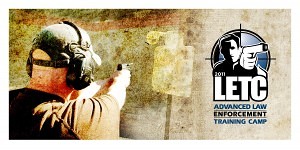
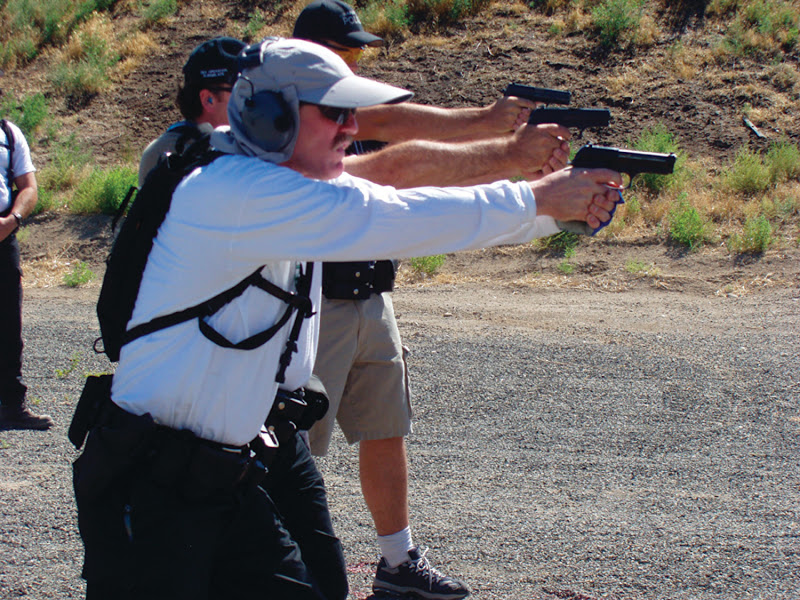 High Performance Handgun
High Performance Handgun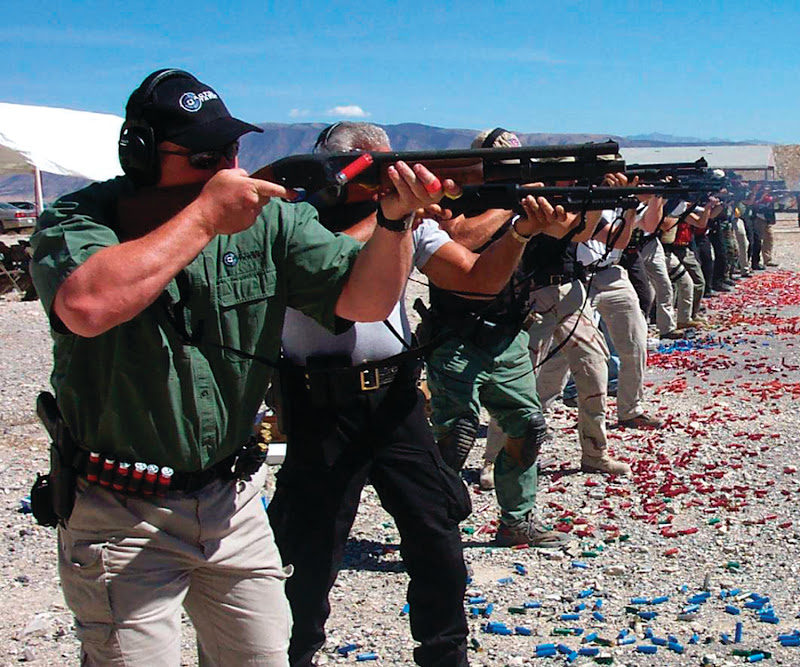
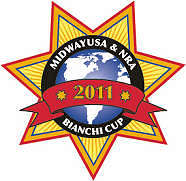
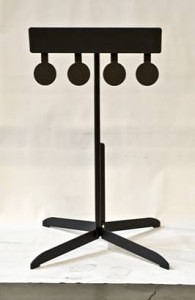
 Until recently, there were only paper targets replicating the pelvic area of the body, but with the Pelvic Torso, you now have the first and only steel target option in the world that simulates this area. The steel provides instant feedback to multiple senses as you hear the bullet strike and see the steal plate swing upon impact.
Until recently, there were only paper targets replicating the pelvic area of the body, but with the Pelvic Torso, you now have the first and only steel target option in the world that simulates this area. The steel provides instant feedback to multiple senses as you hear the bullet strike and see the steal plate swing upon impact.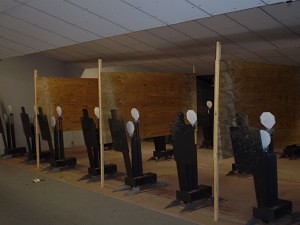
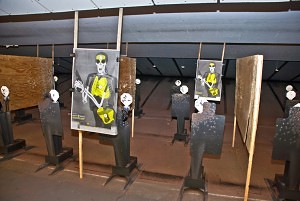

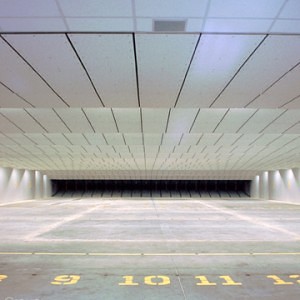
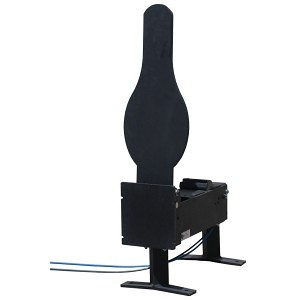
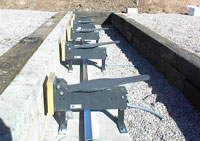
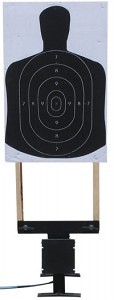 n range of 40 psi to 100 psi. It can also be triggered by a 12V signal of less than 60mA. The actuator uses 10.6 cubic inches of air per actuation. It utilizes a “proportional force” cam lifter system to control the reset action and lift action smoothly and reliably. The Auto-Popper is totally field repairable – a complete field rebuild operation can be done by standard range personnel using standard hand tools. The target plate is reversible and easily changeable.
n range of 40 psi to 100 psi. It can also be triggered by a 12V signal of less than 60mA. The actuator uses 10.6 cubic inches of air per actuation. It utilizes a “proportional force” cam lifter system to control the reset action and lift action smoothly and reliably. The Auto-Popper is totally field repairable – a complete field rebuild operation can be done by standard range personnel using standard hand tools. The target plate is reversible and easily changeable.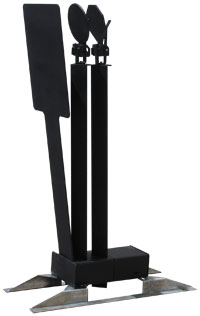 As we learn more and more about the human dynamics involved in armed confrontations, we understand that physical skills that require conscious thought or intellectual processing tend to break down rapidly under high levels of stress. If defensive skills and responses are not programmed in at a subconscious level, the sudden stress may cause us to fumble, freeze or panic. It is in this environment that reactive shooting skills are needed. Such reflexive shooting skills can be taught through the use of extremely short time limits, thus pushing the shooter to function at the limits of reaction and response time. This can be compared to learning how to hit a fast moving ball with a bat or racket, or developing the reflexes to block a punch or kick at full speed. Reactive steel targets provide the instant feedback required to program an officer’s reflexive shooting skills effectively and efficiently.
As we learn more and more about the human dynamics involved in armed confrontations, we understand that physical skills that require conscious thought or intellectual processing tend to break down rapidly under high levels of stress. If defensive skills and responses are not programmed in at a subconscious level, the sudden stress may cause us to fumble, freeze or panic. It is in this environment that reactive shooting skills are needed. Such reflexive shooting skills can be taught through the use of extremely short time limits, thus pushing the shooter to function at the limits of reaction and response time. This can be compared to learning how to hit a fast moving ball with a bat or racket, or developing the reflexes to block a punch or kick at full speed. Reactive steel targets provide the instant feedback required to program an officer’s reflexive shooting skills effectively and efficiently.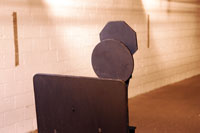 The basic function of the Bobber X-treme™ will probably sound familiar. A steel plate is presented to the shooter from behind cover. This plate can be hit at any time while it is exposed, and a computer interface is used to control the frequency and duration of the target exposures.
The basic function of the Bobber X-treme™ will probably sound familiar. A steel plate is presented to the shooter from behind cover. This plate can be hit at any time while it is exposed, and a computer interface is used to control the frequency and duration of the target exposures.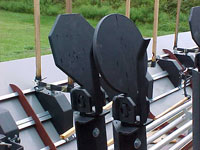 Judgment – Split-second judgment and threat analysis may be the most important elements of the training triangle. The revolutionary Bobber X-treme™ addresses this issue by presenting the shooter with two separate target plates, one directly behind the other. One plate is an 8-inch circle, and the other is an 8-inch octagon. Depending on your training scenario, you can classify all the circle plates as hostile, and all the octagon plates as friendly. When one of the plates jumps up from behind cover, the shooter must quickly determine whether the plate is hostile or friendly and then take the appropriate action. The circles and octagons look enough alike to force the shooter to be sure.
Judgment – Split-second judgment and threat analysis may be the most important elements of the training triangle. The revolutionary Bobber X-treme™ addresses this issue by presenting the shooter with two separate target plates, one directly behind the other. One plate is an 8-inch circle, and the other is an 8-inch octagon. Depending on your training scenario, you can classify all the circle plates as hostile, and all the octagon plates as friendly. When one of the plates jumps up from behind cover, the shooter must quickly determine whether the plate is hostile or friendly and then take the appropriate action. The circles and octagons look enough alike to force the shooter to be sure.